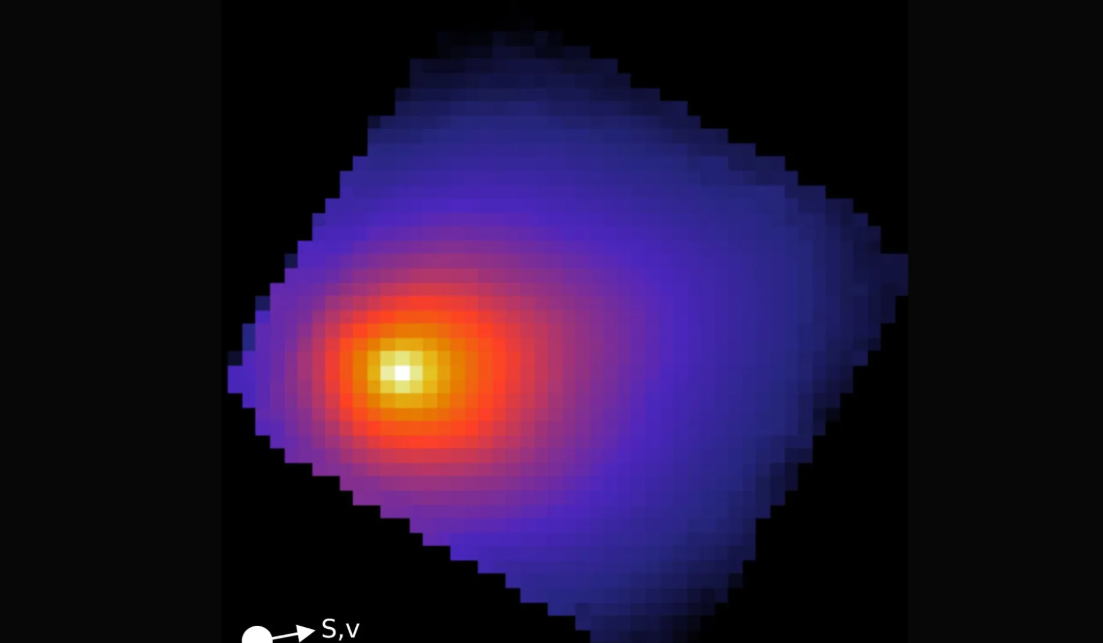James Webb’s sensors detected that 3I/ATLAS’s coma is composed primarily of carbon dioxide, an anomalous composition in the solar system.
The James Webb Space Telescope (JWST), one of the most powerful observatories currently operating, took an image of 3I/ATLAS, the newly discovered interstellar comet transiting the solar system, for the first time. Infrared data made it possible to characterize the object’s unusual coma.
The image reveals that 3I/ATLAS’s tail, or coma, contains primarily carbon dioxide and, in smaller proportions, water, carbon monoxide, water ice, and dust. According to a study pending publication in the Astrophysical Journal Letters, the ratio of carbon dioxide to water (8±1) in the coma is among the highest recorded for a comet at similar distances.
From this high percentage of gas, scientists conclude that the comet’s nucleus is also rich in carbon dioxide. This characteristic indicates that 3I/ATLAS harbors ices that sublimated after exposure to radiation levels much higher than those encountered by any other comet in the solar system.
The JWST data reinforce the idea that interstellar objects can develop very different chemical and thermal histories than bodies formed in our stellar neighborhood.
So far, astronomers have confirmed only three interstellar objects: Oumuamua (2017), Borisov (2019), and 3I/ATLAS (2025). Only two of them had a coma. Borisov displayed a water-rich tail, while 3I/ATLAS’s is dominated by carbon dioxide. Comets born in the solar system typically use water in their nuclei as the primary driver of their activity and maintain a balanced gas composition.
What has been confirmed about 3I/ATLAS
Initial estimates indicate that 3I/ATLAS is traveling at about 61 kilometers per second and measures between 0.32 and 5.6 kilometers in diameter. Evidence suggests it is originating from the center of the Milky Way. It will approach within 1.8 astronomical units of Earth (about 270 million kilometers), so it poses no danger to the planet.
The Hubble telescope detected the comet ejecting between 6 and 60 kilograms of dust per second. It also found traces of water, leading researchers to conclude that the comet was releasing small amounts of this liquid long before passing through the region where comets typically “melt.”
Astronomers consider 3I/ATLAS likely to be the oldest comet ever observed. Some estimates give it an age of 7 billion years, compared to the 4.5 billion years of the solar system. In other words, this body likely existed long before any solid debris formed within our star system.
Researchers will need to act quickly. The interstellar comet follows a hyperbolic orbit and, after reaching perihelion on October 29, 2025, will begin its final exit from the solar system. By the end of 2026, 3I/ATLAS will be beyond the orbit of Jupiter, fading from view.

Email: mary@satprwire.com Phone: +44 20 4732 1986
Marry is a fitness freak in every manner and gives proper care about her health and of others. She is probably the best person we have at Daily Research News for covering articles from the Health sector. If not at work, she can be seen drinking a cup of coffee.


